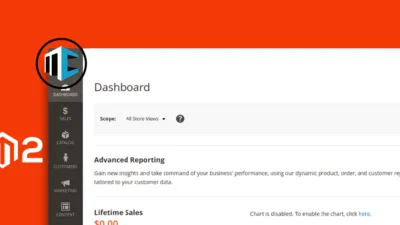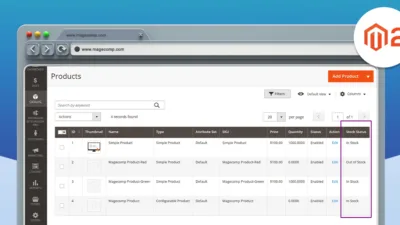Hello Magento Pals ?,
Today I am going to demonstrate How to Add Dynamic System Configuration in Magento 2. Look at the previous topic, if you missed out, Magento 2: Add Swatch Data in Layered Navigation Aggregations in GraphQL.
System Configuration is a very useful aspect for Magento. Many times, Magento developers come across the requirement to add dynamic fields to system configuration to meet the store needs. Dynamic fields are used to manage complex data via system configurations. The admin can add, modify, and even delete the dynamic fields as per the necessity through system configuration.
So, let’s explore the steps to Add Dynamic System Configuration field in Magento 2 ?
How to Add Dynamic System Configuration Field in Magento 2:
Step 1: Create one sample System.xml in the following path:
app/code/Vendor/Extension/etc/adminhtml/system.xml
Then, add the below code:
<?xml version="1.0"?>
<config xmlns:xsi="http://www.w3.org/2001/XMLSchema-instance"
xsi:noNamespaceSchemaLocation="../../../../Magento/Backend/etc/system_file.xsd">
<system>
<tab id="vendortab" translate="label" sortOrder="100">
<label>Vendor TAB</label>
</tab>
<section id="sectionid" translate="label" sortOrder="20" showInDefault="1" showInWebsite="1" showInStore="1">
<class>separator-top</class>
<label>General Config</label>
<tab>vendortab</tab>
<resource>Vendor_Extension::config</resource>
<group id="group" translate="label" type="text" sortOrder="10" showInDefault="1" showInWebsite="0" showInStore="0">
<label>General Configuration</label>
<field id="field" translate="label" type="text" sortOrder="10" showInDefault="1" showInWebsite="1"
showInStore="1">
<label>Field</label>
</field>
</group>
</section>
</system>
</config>
Step 2: To do this, create di.xml in the following path:
app\code\Vendor\Extension\etc\adminhtml\di.xml
Now, add the below code:
<?xml version="1.0" ?>
<config xmlns:xsi="http://www.w3.org/2001/XMLSchema-instance" xsi:noNamespaceSchemaLocation="urn:magento:framework:ObjectManager/etc/config.xsd">
<type name="Magento\Config\Model\Config\Structure\Data">
<plugin name="vendor_dynamic" type="Vendor\Extension\Plugin\Config\Field\Data"/>
</type>
</config>
Step 3: Next, create a Plugin with name Data.php file in Plugin:
app\code\Vendor\Extension\Plugin\Config\Field\Data.php
and add this code to the file:
<?php
namespace Vendor\Extension\Plugin\Config\Field;
use Magento\Config\Model\Config\Structure\Data as StructureData;
use Magento\Framework\Module\ModuleListInterface;
class Data
{
public function __construct(ModuleListInterface $moduleList)
{
$this->_moduleList = $moduleList;
}
public function beforeMerge(StructureData $object, array $config)
{
$moduleList = $this->_moduleList->getNames();
foreach ($moduleList as $name)
{
if (strpos($name, 'Vendor_Extension') === false)
{
continue;
}
$this->moduleslist[] = $name;
}
if (!isset($config['config']['system']))
{
return [$config];
}
$sections = $config['config']['system']['sections'];
foreach ($sections as $sectionId => $section)
{
if (isset($section['tab']) && ($section['tab'] === 'vendor') && ($section['id'] !== 'vendor'))
{
foreach ($this->moduleslist as $moduleName)
{
if ($section['id'] !== 'sectionid')
{
continue;
}
$dynamicGroups = $this->getGroups($moduleName, $section['id']);
if (!empty($dynamicGroups))
{
$config['config']['system']['sections'][$sectionId]['children'] = $dynamicGroups + $section['children'];
}
break;
}
}
}
return [$config];
}
protected function getGroups($moduleName, $sectionName)
{
$defaultFieldOptions = [
'type' => 'text',
'showInDefault' => '1',
'showInWebsite' => '1',
'showInStore' => '1',
'sortOrder' => 1,
'module_name' => $moduleName,
'validate' => 'required-entry',
'_elementType' => 'field',
'path' => $sectionName . '/module'
];
$fields = [];
foreach ($this->getNewField() as $id => $option)
{
$fields[$id] = array_merge($defaultFieldOptions, ['id' => $id], $option);
}
return [
'module' => [
'id' => 'module',
'label' => __('Dynamic Section'),
'showInDefault' => '1',
'showInWebsite' => '0',
'showInStore' => '0',
'_elementType' => 'group',
'path' => $sectionName,
'children' => $fields
]
];
}
protected function getNewField()
{
return [
'name1' => [
'label' => __('Dynamic Field'),
'frontend_class' => 'vendor_dynamic_class',
'show' => 1,
'tooltip' => __('Dynamic Field Tooltip'),
'comment' => __('Dynamic Field Comment')
],
];
}
}
It’s done!
You can check the output from the admin panel. It looks like below…
Output:

Concluding Words:
This way you can Add Dynamic System Configuration Field in Magento 2. Add your questions in the comment section and I will be glad to be of help.
Relevantly, you may also like to read –
- How to get Dynamic Generated row value of System Configuration in Magento 2
- How to add dynamic-row multi select in system configuration in Magento 2?
- How to Create Dynamic Generated Field in System Configuration of Magento 2
Keep in touch, Keep rating and Keep sharing!
Happy Coding ?












